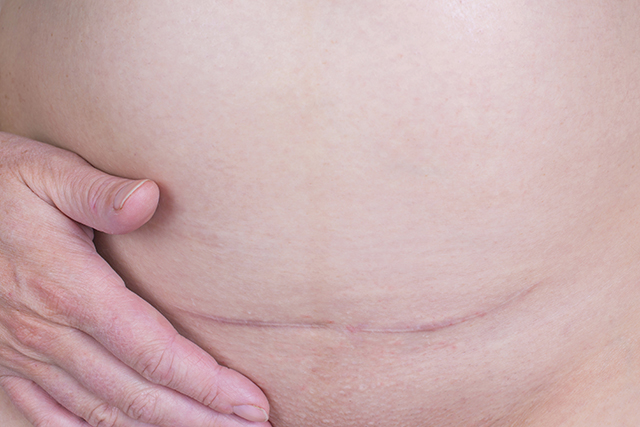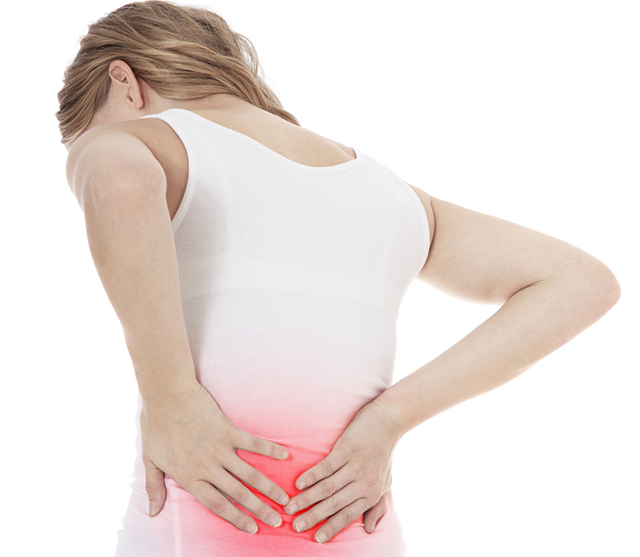https://www.girlsgonestrong.com/
As a new mom, adjusting to life with your new responsibilities and new schedules, you may be itching to start (or get back into) a fitness routine to carve out some me-time and reap the benefits of exercise. After having a C-section, there are definitely some very effective exercises and workouts you can do. However, it’s important to also know which exercises and workouts that are not recommended after a C-section.
Rehab is important after a C-section. Although it’s often treated like a minor procedure (likely because it’s so common) it is actually a major surgery. Keep in mind that I’m not saying this to scare you, but rather, to help you understand the importance of taking the time and care to rehab your body after your C-section, just like you would any other major surgery. For more on rehabbing and returning to exercise, read Returning To Exercise After A C-Section.

This scar is not just on the surface, remember, it’s many layers deep into the belly.
The core and pelvic floor have undergone pressure and changes throughout pregnancy, as it is. Compound this with incisions, pulling, and stress from a C-section, and you have a body that deserves adequate care and recovery protocols.
The exercises below are ones I recommend you avoid after a C-section—att least until you have healed your core and pelvic floor with exercises that restore function to those muscles (e.g. healed diastasis recti, no incontinence, no pelvic or back pain, etc).
I also advise you see a pelvic floor or women’s health physiotherapist after a C-section (from 6-8 weeks onwards) to have an assessment of your abdominal wall and your scar function.
The following exercises are not recommended because:
- They could cause more harm than good.
- You risk damaging the pelvic floor or pelvic organs.
- They could increase the severity of your abdominal separation.
- They could cause undue stress to the incision, and prevent the scar from healing properly.
Exercises to Avoid After C-Section
1. Traditional/advanced abdominal exercises
In this category, I would include exercises that put a lot of stress on the abdominal wall. Exercises that feel like you’re working the abs really hard/you feel a lot of pulling or straining on the abdominals, or that you cannot breathe through, or you can see your belly and lower pelvic region bulging up/out when you’re doing the exercise.
This doesn’t mean that you shouldn’t do exercises that work the abs. You should, in fact. That being said, there are abdominal exercises that are more beneficial than others.
I place these ‘not-so-beneficial’ abdominal exercises into two categories:
Exercises where the belly/lower pelvic region is bulging up or out: crunches and sit-ups, leg raises, bicycles, knee tucks, jackknives.
You don’t want to train the belly to bulge outwards. This can create too much pressure on your C-section incision and on the connective tissues of the abdominal wall increasing the severity of diastasis recti.
These exercises could also be placing a lot of stress downward on the pelvic floor and pelvic organs. You might feel pressure on your bladder, like you can’t hold your bladder.

If we train the belly to bulge, it will keep bulging!
Exercises where the belly is hanging or drooping down towards the floor: front planks and variations, pushups, renegade rows, conventional deadlifts, etc.
In these exercises the belly may be hanging towards the floor. This can be an issue if you can’t feel “tension” in the abdominals; if you feel like you’re going to ‘fall out the front’ of your belly.
For example, if you’re doing a front plank directly on the floor and you never feel it in the abs, but feel a TON of work in the shoulders and upper back, or some discomfort in the lower back, this is a good sign that variation of front plank needs some tweaking.
2. Plyometric exercises
In this category, I would include exercises or workouts that use:
- Running, sprinting, jogging
- Jumping, box jump, jumping rope
- Burpees, squat thrusts, and other similar conditioning exercises
The issue here is that you’re working on an unstable pelvis and core post C-section. These plyometric exercises require so much core stability!
If your body doesn’t quite have it yet, you’re just waiting for an injury to happen. These injuries can show up in the form of lower back, hip, knee, and neck pain.
3. Intense exercise/exercise classes
You need to re-train the body. Just as there would be with any other surgery, a C-section requires taking just a couple of steps back to teach the core and pelvic floor muscles that are so intimately affected by the procedure of a C-section, how to function at their best again.
If you jump right back into heavy weight training (or the abdominal and plyometric exercises mentioned above), intense cardiovascular workouts, or something like a typical ‘mom and baby bootcamp’ class (with lots of running, jumping, crunches, etc) you’re again risking injury.

Keep your sights set on the long-term gains. This is where the physical results come from – consistency.
Whenever you start working out again after having your baby, it is simply more effective to stick to exercises and an exercise schedule that rebuild your strength slowly and steadily, rather than starting where you think you “should be” or where you left off before pregnancy.
We want to keep you exercising for the long term, not for three weeks until you throw your back out from exercise that’s too intense for your core to handle.
If you’re looking for an example of a safe C-section recovery strength training workout, read this article.
4. Exercises that cause pain
This applies to your whole body, but pay special attention to how your incision/scar site feels during and after exercise.
You may feel some gentle tenderness if you’re just beginning to work out again. Knowing that you worked out the day or two before is great. Having some muscle soreness is good!
But, if you’re feeling aching or pain in your scar that bothers you in your workouts or daily activities, you need to reevaluate and make some changes.
I strongly recommend seeing a pelvic floor physiotherapist, women’s health physio, massage therapist, or other therapist who works with scar tissue, and have them work on your scar or teach you a few techniques to do “scar mobilization” on yourself.
This is an important piece of the puzzle to helping your scar heal well (it’s never too late for this), and for getting good sensation and movement back in the tissues around your scar.
5. Anything that your gut tells you isn’t quite right
Listen to your body. Trust your body.
If something doesn’t feel quite right during an exercise, it’s probably not. If you just “know” that what you’re feeling in your body isn’t comfortable, stop.
Sometimes exercises will feel a bit awkward when you’re first learning them, and that’s ok. My clients often tell me that a lot of the exercises in their training plans feel really awkward at first when they’re learning them!
But, if an exercise is causing you pain, if there’s a ton of pulling through your scar, if you feel pressure in your bladder or rectum, if you’re leaking urine during or after a workout, and/or if you can’t breathe well, stop the exercise.
Remember: FUNCTION first, before any intense exercise.
Filed under: Fitness

 For now classes are 6pm and 640pm at 2840 Wildwood st in the Boise Cloggers studio.
Book your class NOW!
click this ==>
For now classes are 6pm and 640pm at 2840 Wildwood st in the Boise Cloggers studio.
Book your class NOW!
click this ==>








